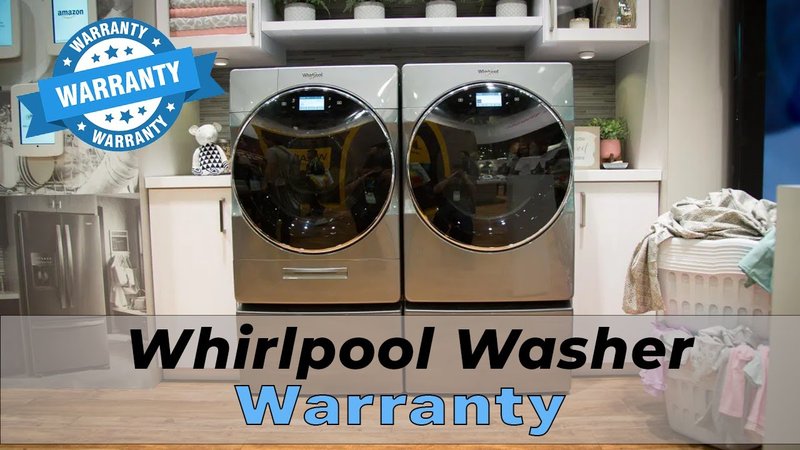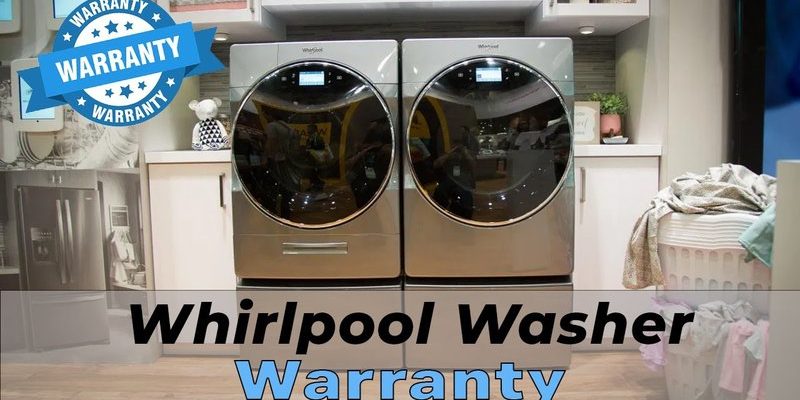
Imagine buying a used Whirlpool washer or dryer—kind of like adopting a slightly older pet instead of a brand-new puppy. You know the appliance has already had some life but might still have plenty of good days ahead. Now, you might be wondering, “Can I still register this used Whirlpool laundry appliance for warranty?” It’s a fair question because warranties are like insurance for your appliance—they give you peace of mind if something goes wrong.
Here’s the thing: registering a new Whirlpool appliance is usually straightforward. You unbox it, follow some instructions, and boom—you’ve got warranty coverage. But what happens if the appliance wasn’t brand new when you got it? Let me explain the ins and outs of registering used Whirlpool laundry machines and what that means for your warranty status.
Understanding Whirlpool Appliance Warranties
First off, it helps to know how warranties work with Whirlpool appliances. When you buy a brand-new washer or dryer, Whirlpool typically offers a limited warranty—usually covering parts and labor for a certain number of years. This warranty activates on the date of purchase, protecting you against manufacturing defects and early malfunctions.
Warranties aren’t like a Netflix subscription where you can just sign up anytime. They have a clear start date, and they’re tied to the original buyer’s purchase information. This means that the warranty clock starts ticking the day the appliance is bought new from an authorized retailer.
So, when you purchase a used Whirlpool laundry appliance, here’s the catch: the original warranty usually doesn’t reset. You’re essentially stepping into the appliance’s current “warranty timeline,” which might already be partially or fully expired. This is crucial to understand before you expect to register a used machine and get full warranty coverage.
Can You Register a Used Whirlpool Laundry Appliance?
In simple terms, no, you typically cannot register a used Whirlpool laundry appliance for a new warranty. Whirlpool’s warranty registration process requires information from the original purchase, such as the purchase date and retailer details. If you try to register a used appliance, Whirlpool’s system will likely detect the earlier purchase, preventing a fresh warranty activation.
Think of it like trying to activate a phone plan on a SIM card that’s already active elsewhere. The system knows it’s been used, so it won’t allow a duplicate activation. Whirlpool appliances work similarly: the warranty is registered only once, usually by the first owner.
However, there are some exceptions. For example, if you buy a used Whirlpool appliance from an authorized dealer who offers their own limited warranty or certification program, you might get some coverage, but this is rare and typically not the standard Whirlpool warranty. So, it’s worth asking about this when buying used appliances.
Why You Can’t Usually Register Used Whirlpool Appliances
Here’s why Whirlpool restricts warranty registration for used appliances. The warranty is designed to protect the original buyer against manufacturing defects or early breakdowns. Tracking the original purchase date helps Whirlpool keep warranty service fair and manageable for everyone.
Allowing multiple registrations for the same appliance would create chaos. Imagine if an appliance could have its warranty “reset” each time it changed hands—that could lead to fraud or abuse, with people claiming warranty service long after the appliance’s expected lifespan.
Plus, appliances wear down over time. Most issues after a few years aren’t manufacturer defects but more related to regular wear and tear. So, having a warranty tied only to the initial purchase helps prioritize resources for genuine early-life defects rather than normal aging problems.
What Happens to Warranty When You Buy a Used Whirlpool Appliance?
When you bring home a used Whirlpool laundry machine, you’re usually inheriting whatever warranty was left by the original buyer—if any is left at all. If the appliance is just a few months old, there might still be some active warranty. But if it’s older, the warranty is probably expired.
Because Whirlpool warranties don’t transfer officially, service centers may treat repairs on used appliances as out-of-warranty jobs, which means you’d cover parts and labor costs yourself. This can add up, so factoring potential repair costs into your decision to buy used is wise.
However, some used appliance sellers offer their own limited warranties or return policies, which can provide a bit of backing. It’s always smart to check and confirm what kind of protection you get when buying used.
How to Check the Warranty Status of a Used Whirlpool Appliance
You might be asking, “Is there a way to find out if my used Whirlpool washer or dryer is still under warranty?” Good question! Whirlpool provides tools to check warranty status if you have the appliance’s serial number and model information.
Here’s how you can do it:
- Locate the model and serial numbers. You’ll typically find these on a sticker inside the door frame or on the back of the appliance.
- Visit the Whirlpool warranty lookup page.
- Enter your model and serial numbers to see if the appliance still has any warranty coverage.
If the site says no active warranty is found, it probably means the original warranty expired or was registered long ago. In that case, repairs might be out-of-pocket unless you have additional coverage from the seller.
What Are Your Options If Your Used Appliance Isn’t Under Warranty?
Honestly, buying a used Whirlpool appliance without warranty can feel a bit like flying without insurance—possible, but riskier. But don’t panic; there are ways to manage this risk.
First, consider purchasing an extended warranty or appliance protection plan from third-party providers. These plans can cover repairs for mechanical breakdowns and often kick in right after the manufacturer’s warranty ends—or immediately for used items.
Another practical step is getting a trusted appliance technician to inspect the machine before you commit. This can help spot potential issues that might lead to costly repairs later. It’s a bit like a pre-purchase vehicle inspection when buying a used car.
Finally, learning some basic troubleshooting and maintenance tips can stretch your appliance’s lifespan. Small things like cleaning lint filters, checking hoses, or resetting the control board can prevent problems before they start. If you ever run into issues, having the model and serial numbers handy is great for troubleshooting guides or when contacting repair services.
Tips for Registering New Whirlpool Appliances
While registering a used appliance is tricky, registering a new one is a breeze if you know what to do. To make sure you get your warranty coverage, here’s what I recommend:
- Register promptly: Sign up online or send in your warranty card within 30 days of purchase.
- Keep your receipt: Store your proof of purchase safely—it’s essential if you ever need warranty service.
- Note your model and serial numbers: These are your keys to support and troubleshooting.
- Register on Whirlpool’s official site: This ensures your warranty is properly logged in their system.
Following these steps helps avoid delays when looking for service, and you won’t need to play detective if problems crop up.
Final Thoughts: What This Means for Used Whirlpool Laundry Appliances
So, can you register used Whirlpool laundry appliances for warranty? The short answer: not really. Whirlpool’s warranty is meant for the original buyer and starts ticking from the appliance’s first purchase date. Once that warranty period passes—or if you’re a second-hand buyer—you usually can’t reset or register a new warranty on the same unit.
If you’re eyeing a used Whirlpool washer or dryer, it’s wise to check its current warranty status and understand what coverage, if any, remains. Don’t hesitate to ask the seller about any guarantees or return policies they offer. And if warranty coverage isn’t available, consider alternatives like extended warranties or professional maintenance to protect your investment.
Ultimately, a used Whirlpool appliance can still serve you well, but it pays to be informed about warranty limits and what they mean for future repairs. That way, you won’t be caught off-guard if you need to troubleshoot, reset, or pair your machine with replacement parts down the road.
